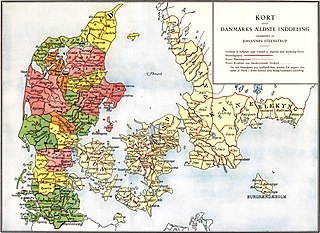Örkelljunga (Municipality)
| Örkelljunga municipality | |||||
|---|---|---|---|---|---|
|
|||||
| State : | Sweden | ||||
| Province (län): | Skåne County | ||||
| Historical Province (landskap): | Gentle | ||||
| Main place: | Örkelljunga | ||||
| SCB code: | 1257 | ||||
| Residents : | 10,280 (December 31, 2019) | ||||
| Area : | 329.7 km² (January 1, 2016) | ||||
| Population density : | 31.2 inhabitants / km² | ||||
| Website : | www.orkelljunga.se | ||||
| List of municipalities in Sweden | |||||
Coordinates: 56 ° 17 ' N , 13 ° 17' O Örkelljunga is a municipality ( Swedish kommun ) in the southern Swedish province Skane Lan and the historic province Scania . The main town of the municipality is Örkelljunga .
geography
The municipality of Örkelljunga is located in the northwest of Skåne on the border with Halland and Småland . The nearest port is in Helsingborg and, like the airport in Ängelholm, can be reached by car within half an hour.
places
There are the following localities ( tatorter ):
history
|
|
|
| Location of Örkelljunga in medieval Denmark. |
The village of Örkelljunga, from Öthknealyng (heather desert), has been documented since the 14th century: The first written mention is found in 1307 in a letter from the Danish King Erik VI. to the Hanseatic City of Lübeck.
On the Danish-Swedish border near Lycksta (today also part of the municipality of Örkelljunga) there was also a castle built by the Danes at that time, which was used as a place of arbitration between Erik VI. and the Dukes Erik Magnusson and Waldemar Magnusson . The castle is historically documented in the Seelands Chronicle, according to which it was burned down by Captain Eskil Krake in 1316. Apart from small finds, no remains of the castle have been found to date.
On August 27, 1510, Fantehåla, a trench in the area of today's municipality, was the scene of a battle between Sweden and Denmark, in which a 700-strong Swedish cavalry detachment was destroyed by a surprise attack by Danish troops.
In 1657, after the victory at Genevad in the Second Northern War , the Swedish Field Marshal Gustaf Otto Stenbock set up a fortified camp near Örkelljunga to wait for reinforcements. He successfully prevented the advance of the Danish troops for a month, but finally had to give up the camp due to scarce supplies and increasingly frequent attacks by the Snapphanar (local irregulars) and retreat to Markaryd . The remains of the camp ramparts that were built at that time can still be seen in the area today.
At the end of the Northern Wars of the 16th and 17th centuries, the population in Örkelljunga had shrunk to a few hundred, impoverished and economically insignificant. It was not until the beginning of the 19th century that the region slowly recovered, and the meanwhile around 1500 inhabitants, who until then had mostly been smallholders, organized themselves into larger farms. At the same time, Örkelljunga - as in other parts of Sweden and Western Europe - began a wave of emigration driven by poverty, dissatisfaction and rumors of gold discoveries in California (see Swedish emigration to the United States ), which peaked in the 1880s when it was alone in Örkelljunga 431 emigrants were counted in 10 years.
The connection of Örkelljunga to the railway line from Kärreberga ( Åstorp municipality ) to Värnamo in 1894 finally brought the region a significant economic boom. Until the end of the 1960s, this branch line was used for passenger transport by rail buses , and efforts are still being made to revive this former connection.
Web links
- Official website (Swedish, German, English)
- Örkelljunga's story ( Memento from June 16, 2013 in the Internet Archive ) (Swedish)
Individual evidence
- ↑ Folkmängd i riket, län och kommuner December 31, 2019 at Statistiska centralbyrån
- ↑ Kommunarealer January 1, 2016 at Statistiska centralbyrån (including all inland waters)
- ↑ a b c d e Nils-Arvid Bringéus: Örkelljunga genom tiderna (Swedish). Article on the occasion of a handicraft exhibition in 1952. Online ( Memento from June 16, 2013 in the Internet Archive ) accessed on November 20, 2013.
- ↑ a b Tourist Information Örkelljunga ( Swedish ) Örkelljunga kommun. Archived from the original on June 10, 2015. Retrieved November 19, 2013.
- ↑ Sven Sandström: Örkelljunga startar kamp för järnväg ( Swedish ) Helsingborgs Dagblad. Retrieved on November 20, 2013. ( Page no longer available , search in web archives ) Info: The link was automatically marked as defective. Please check the link according to the instructions and then remove this notice.



